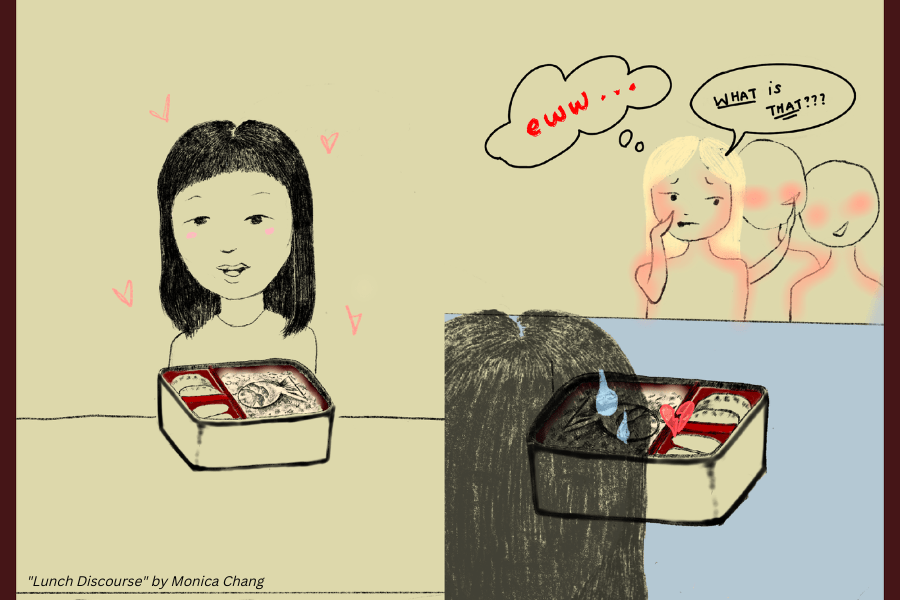
Re-Defining Bilingualism and Biculturalism
A unique Modern Languages course leads to introspection and self-discovery
By KellyAnn Tsai
What does it mean to be bilingual in the United States when approximately 80% of Americans are monolingual English speakers? Just ask some students at Carnegie Mellon University.
In the Modern Languages course “Bilingual & Bicultural Experiences in the US,” students explore what it means to be bilingual and/or bicultural from multiple lenses. The course was created by Katharine E. Burns, Assistant Professor of Second Language Acquisition and Hispanic Studies.
Students learn about the nature and experience of bilingualism and biculturalism (past and present) and how it shapes different perspectives and worldviews—within an individual, between individuals, and on a larger societal and cultural level, with a focus on the United States. The course highlights the experiences of groups such as immigrants, racial and ethnic minorities, indigenous communities, and users of signed languages, and incorporates a variety of resources including sociolinguistic research, film and documentaries, historical documents, literature, music and art.
Taught in English and open to all students—whether or not they identify as bilingual or bicultural—the course has helped students better understand their own identity, as well as those of their friends and families.
Rena Li, a Human Computer Interaction major who took the course last spring, thought she knew all about bilingualism and biculturalism. She grew up in an immigrant family and speaks Mandarin at home with her family. But Li was in for a surprise.
“The class shed a whole new light on biculturalism and what that means,” she said. “I went in thinking that I knew what things were, and I kept getting proved wrong. Every class I learned something new.”
Like Li, some students were drawn to the class due to their personal experiences growing up in bilingual and bicultural environments. Others started learning a second language later in life and were curious to see if they could be considered bilingual. But regardless of background, the course led all students to reexamine their assumptions of bilingualism and biculturalism.
“After taking this class…I now frame [bilingualism] in a different way,” said Alisha Singh, a recent graduate in Computer Science with a self-designed minor in Hindi Studies. For Singh, complete fluency in another language is not necessary to be bilingual; instead, a person’s multicultural experiences help shape their identity as a bilingual individual.
The discussion-based course also helped build a sense of community among classmates, who compared their experiences with bilingualism and biculturalism.
“I don't think I've ever had a class where I can talk about [my] experiences and be surrounded by other people who are also interested in [this topic],” said Monica Chang, a senior majoring in Fine Arts with a minor in Animation & Special Effects. “Talking about other people’s experiences really helped me understand I'm not alone in this.”
Karla Tejeda, a senior majoring in Applied Multilingual Studies in the Department of Modern Languages, enjoyed the process of learning about others’ experiences. “We got to explore our own bilingual experiences, as well as others whose experiences I hadn't considered before. It made me realize that not every bilingual experience is the same as my own.”
For their final projects, students blended their bilingual and bicultural identities with their academic areas of interest. Projects included:
- Digital paintings depicting the artist’s bilingual and bicultural journey as a Korean-American (Monica Chang)
- Scripts for doctors to help address issues around ad-hoc medical interpretation (Maya English)
- A podcast episode comparing representation of Asian-Americans and Asian-Canadians in blockbuster films Crazy Rich Asians, Shang-Chi and the Legend of the Ten Rings, and Turning Red (Rena Li)
- An interactive exploration of how TikTok has influenced bilingual and bicultural identities of South Asians in diaspora (Alisha Singh)
- K-12 math lesson plans for Spanish-English bilingual students incorporating bilingualism and biculturalism (Karla Tejeda)
With the course behind them, the students expressed a renewed appreciation for the nuances of bilingualism, even if some are still hesitant to fully identify as bilingual.
Singh, who started learning Hindi in her teens by watching Bollywood movies, is still not sure if she would consider herself bilingual—but the course has made her think. “I think I would have said no before, but [now] I'm not exactly sure.”
Tejeda, who speaks Spanish with her parents but admits to a few gaps in her Spanish knowledge, says she is now “more accepting of the fact that I will never be truly, fully well versed in both languages and in every single aspect of my life.”
Ultimately, the course opened students’ eyes to the bilingual and bicultural experience, both for themselves and for others.
“The class really reshaped and redefined how [bilingual and bicultural people] should view their culture and their language and their background,'' said Li. “For people who don’t come from a mixed background, they should learn a little bit more, just so that they're well-equipped for future experiences.”
Bilingual and Bicultural Experiences in the US will be taught in spring 2023.